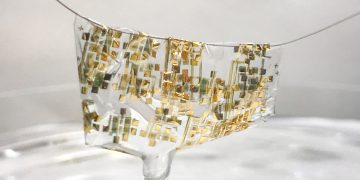Unveiling the Xiaomi 13 Ultra’s “Carbon Neutral” Shell
In early 2025, Xiaomi made headlines worldwide by launching its flagship model, the Xiaomi 13 Ultra, boasting a groundbreaking feature: a “carbon capture” smartphone shell. Marketed as a major leap forward in sustainable technology, this device promised not just premium performance but also active carbon dioxide absorption—a step toward combating climate change through everyday consumer electronics. According to Xiaomi’s promotional materials, the phone’s casing was embedded with proprietary photocatalytic materials capable of converting CO2 into harmless compounds when exposed to ambient light. The company claimed that users carrying the device would indirectly contribute to offsetting their carbon footprint, positioning the phone as a symbol of innovation and ecological responsibility.
This announcement triggered a wave of excitement and curiosity. Tech enthusiasts applauded the prospect of smartphones contributing directly to environmental solutions, and green consumers viewed the device as a novel way to participate in climate action. Industry analysts noted that the integration of carbon capture technology into a mass-market device could open new avenues for sustainable manufacturing and circular economy initiatives. Media outlets framed the Xiaomi 13 Ultra as a flagship not only for technology but for planetary stewardship.
However, beneath the surface of marketing hype, questions began to emerge. How much carbon does the shell really absorb? Does it meaningfully offset the emissions generated during production, transportation, and use? Independent researchers soon turned their attention to this ambitious claim, seeking to validate the extent of the phone’s environmental impact.
Scientific Verification: 200 Years of Use Needed to Offset Manufacturing Emissions
Several leading environmental science labs launched rigorous tests on the Xiaomi 13 Ultra’s carbon-capturing shell to measure its real-world efficacy. Using controlled settings that simulated various lighting conditions and typical user scenarios, researchers analyzed the shell’s photocatalytic efficiency and total carbon absorption rate.
The results were sobering. While the technology did absorb CO2, the amount was orders of magnitude lower than what Xiaomi’s marketing materials implied. Quantitative data showed that the shell could capture approximately 0.05 grams of CO2 per day under optimal lighting conditions. Given that the average carbon footprint associated with manufacturing a high-end smartphone—considering raw material extraction, assembly, packaging, and shipping—ranges from 70 to 100 kilograms of CO2 equivalent, the math was stark. To offset just the emissions generated during production, the Xiaomi 13 Ultra’s shell would need to be actively absorbing carbon for nearly 200 years of continuous use.
Environmental scientists emphasized that this discrepancy revealed a fundamental flaw in the carbon-neutral narrative propagated by Xiaomi and others. The phone’s carbon capture function, while scientifically interesting, was largely symbolic rather than substantive in mitigating climate impact. Moreover, the technology’s reliance on sustained, ideal lighting and user engagement meant that in typical urban indoor conditions, actual absorption rates would be even lower.
The study sparked heated debate in sustainability circles. Critics accused manufacturers of greenwashing—promoting superficial environmental benefits to appeal to eco-conscious consumers without making meaningful changes in production practices. The risk, they argued, was that such claims could mislead consumers into complacency, reducing pressure on companies to tackle the much larger sources of emissions embedded in supply chains.
Meanwhile, Xiaomi defended its innovation as a step toward integrating climate-positive technologies into everyday life, stressing that this was only the first generation of carbon capture-enabled electronics and that future advancements would improve efficiency dramatically. Still, the scientific verdict was clear: the carbon capture shell, while a remarkable engineering feat, could not substitute for broader systemic changes needed to decarbonize the tech industry.

Towards Regulation: The EU’s Proposed Legislation on Green Marketing Claims
In response to the growing number of environmental claims across consumer products—many of which were unverified or exaggerated—the European Union announced in mid-2025 its intention to introduce legislation aimed specifically at regulating green marketing and advertising. This regulatory push reflected mounting concern over greenwashing and its potential to undermine public trust and distort markets.
The draft regulation, currently under consultation, requires companies selling products within the EU to substantiate any environmental claims with transparent, independently audited lifecycle assessments. Claims such as “carbon neutral,” “zero emissions,” or “carbon capture” would be subject to strict criteria, including clear definitions of scope, measurement methods, and consumer communication standards.
For smartphones like the Xiaomi 13 Ultra, this would mean manufacturers must disclose the actual carbon offset capacity of any embedded technologies and place these figures in context relative to overall product emissions. Ambiguous or misleading claims could trigger penalties, recalls, or mandated corrections.
This regulatory framework aims not only to protect consumers but also to incentivize genuine innovation. By filtering out superficial greenwashing, it hopes to channel investment toward technologies that deliver measurable environmental benefits. Consumer advocacy groups welcomed the EU’s move, calling it a “necessary step to hold corporations accountable” and “a wake-up call to the global tech industry.”
At the same time, some manufacturers warn that overly stringent rules could stifle creativity or slow the introduction of promising new sustainability technologies. Industry representatives argue for balanced regulations that encourage transparency without erecting prohibitive barriers to innovation.
Rethinking the Tech Industry’s Role in Climate Action
The Xiaomi 13 Ultra episode underscores the broader challenge facing the consumer electronics industry: how to reconcile relentless demand for new devices with urgent environmental imperatives. Smartphones and other gadgets are deeply intertwined with global resource extraction, energy consumption, and electronic waste generation. While integrating green technologies like carbon capture shells may signal corporate environmental awareness, it cannot replace fundamental shifts in product design, supply chain transparency, circular economy practices, and user behavior.
Experts suggest that true progress requires holistic approaches that combine material innovation, extended product lifecycles, modular repairability, and responsible recycling infrastructure. Additionally, digital services enabling software longevity and reduced energy consumption can complement hardware advances.
Consumers too play a crucial role by demanding verifiable sustainability, opting for repair over replacement, and supporting companies with authentic green commitments. In the absence of these market pressures, “greenwashing” risks becoming a marketing shield rather than a catalyst for transformation.
The EU’s regulatory efforts mark an important step toward creating an environment where environmental claims carry weight and where innovations are not just symbolic but impactful. For now, the lesson from the Xiaomi 13 Ultra is clear: technology alone cannot solve climate change. It is the choices behind and beyond technology—manufacturing methods, consumption patterns, regulatory frameworks—that will determine whether devices truly help or merely hype the planet’s future.

















































Discussion about this post